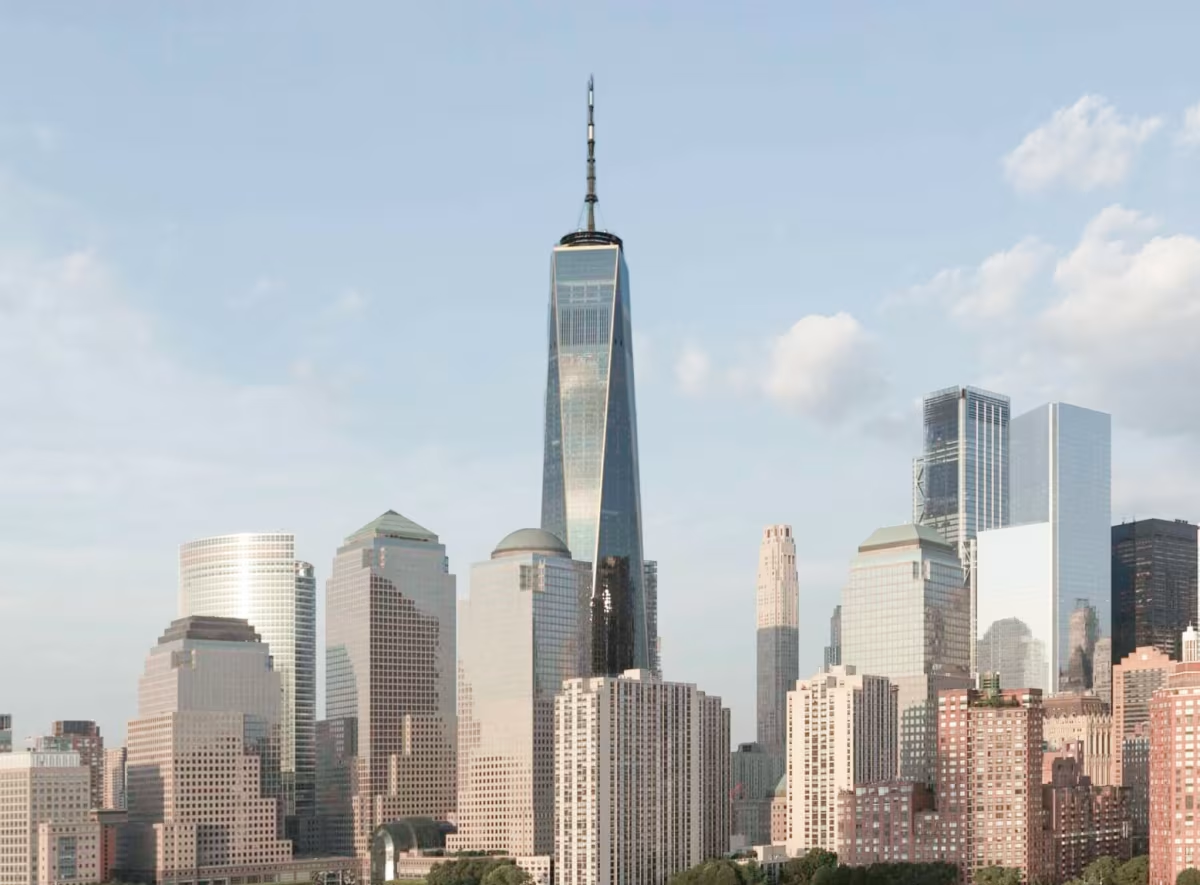Random House Tower vs One World Trade Center


Comparing the Random House Tower and the One World Trade Center is particularly interesting because they share the same skyline in New York, NY, and were both designed by Skidmore, Owings & Merrill. However, they were completed more than 11 years apart.
This offers a unique perspective on how the architect's style and the city's architecture evolved over time.
Height & Size
The One World Trade Center is clearly the larger tower of the two, both in terms of height and number of floors. It rises to 1775ft (541m) with 104 floors above ground, while the Random House Tower reaches 682ft (208m) with 52 floors above ground.
Of course, each project may have faced different briefs or regulatory constraints, which we don't really know about and could also explain the outcome.
Architectural Style
Both the Random House Tower and the One World Trade Center were designed in line with the aesthetic conventions of the Contemporary style.
At the time, this style was at the height of its popularity. So Skidmore, Owings & Merrill followed what was in many ways expected at the time, producing designs that fit comfortably within contemporary architectural norms rather, than breaking with convention.
Uses
The Random House Tower follows a mixed-use model, combining commercial and residential. In contrast, the One World Trade Center has remained primarily commercial.
The Random House Tower offers 101 residential units.
The Random House Tower also provides 150 parking spaces.
Structure & Facade
The two towers rely on different structural systems, reflecting distinct engineering strategies.
The Random House Tower uses a Frame structural system, which relies on a regular grid of columns and beams to sustain its weight, while the One World Trade Center uses a Framed Tube In Tube system, that combines a strong central core with a perimeter tube of columns.
Yet, when it comes to their facade, they both employed the same solution, a Curtain Wall facade.
A curtain wall is a non-load-bearing facade hung from the structural frame. It is anchored to floor slabs and transfers only its own weight and wind loads, allowing for sleek, glassy exteriors.
| Random House Tower | One World Trade Center | |
|---|---|---|
| Skidmore, Owings & Merrill | Architect | Skidmore, Owings & Merrill |
| 2000 | Construction Started | 2006 |
| 2003 | Year Completed | 2014 |
| Contemporary | Architectural Style | Contemporary |
| Mixed | Current Use | Commercial |
| 52 | Floors Above Ground | 104 |
| 2 | Floors Below Ground | 5 |
| 193 | Last Floor Height | 386 |
| 208 m | Height (m) | 541 m |
| Frame | Structure Type | Framed Tube In Tube |
| Steel And Reinforced Concrete | Vertical Structure Material | Steel |
| Reinforced Concrete | Horizontal Structure Material | Poured Concrete Over Metal Decking |
| No | Facade Structural? | No |
| Glass, Steel, Aluminum | Main Facade Material | Glass, Steel |
| Plaza Construction Corporation | Main Contractor | Tishman Construction |
| Steve Ross | Developer | Port Authority Of New York And New Jersey |
| Thornton Tomasetti | Structural Engineer | WSP Group |
| NY | State | NY |
| New York | City | New York |
| 1739 Broadway | Address | 285 Fulton Street |